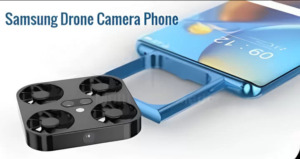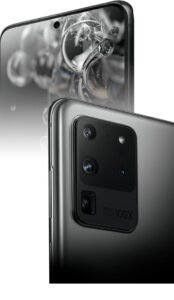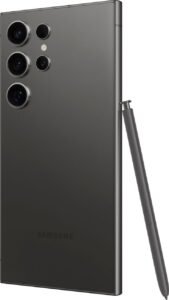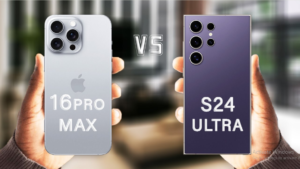Samsung has once again broken new ground in mobile technology by merging the versatility of smartphones with the innovation of drones. Their latest release, the Samsung Flying Camera Phone, represents a quantum leap in photographic capabilities for mobile devices. Equipped with a state-of-the-art levitation system, this device can detach its camera module and take to the skies, offering users unprecedented angles and perspectives for their photos and videos. The Samsung Flying Camera Phone ushers in a new era for content creators and enthusiasts, promising to transform how we capture our world.
The Evolution of Mobile Photography
The journey of mobile photography has seen transformative advancements since the advent of camera-equipped phones. Initially featuring low-resolution sensors, early mobile cameras offered mere convenience over quality. Gradually, refinements in sensor technology enhanced image clarity and detail. The introduction of multi-lens systems marked a significant shift, enabling depth-of-field effects and wide-angle shots reminiscent of professional photography.
- First-generation mobile cameras with VGA resolution
- Emergence of megapixel count as a critical feature
- Inclusion of LED flash and autofocus capabilities
- Integration of front-facing cameras for selfies
- Development of computational photography and AI enhancements
- Adoption of multi-lens configurations for versatile imaging
- Introduction of optical image stabilization (OIS)
This evolution reflects a perpetual striving for excellence, setting the stage for innovations like the Samsung Flying Camera Phone, a device destined to redefine photographic boundaries yet again.
Breaking Down the Technology Behind the Flying Camera
The flying camera integrates advanced mechanical and electronic systems. Key components include:
- Miniaturized Propulsion: Utilizing micro rotors for lift and maneuverability.
- Stabilization Technology: Advanced gyroscopes maintain stability, ensuring sharp images while in motion.
- Intelligent Navigation: AI-driven algorithms enable obstacle avoidance and autonomous flight patterns.
- Power Efficiency: High-density batteries combined with power management software extend operational time.
- Seamless Connectivity: It syncs in real-time with smartphones, using high-speed data transfer protocols.
- Compact Design: Foldable arms and retractable propellers for an easy transition from phone to drone.
This blend of technologies marks a significant leap in mobile photography, pushing the boundaries of what’s possible with consumer electronics.
Potential Uses and Applications of a Flying Camera Phone
- Aerial Photography: Users can capture stunning aerial shots, traditionally requiring drones.
- Event Coverage: Provides a new perspective for weddings, festivals, or concerts by flying overhead unobtrusively.
- Real Estate Showcasing: Offers bird’s-eye views of properties, enhancing real estate listings with aerial images.
- Search and Rescue Missions: Helps locate individuals in rugged terrain or during natural disasters.
- Traffic Monitoring: Assists in assessing traffic conditions by hovering above roadways.
- Wildlife Documentation: Observe animals in their natural habitats without disturbing them.
- Sports Training Analysis: Captures dynamic overhead footage of athletes for performance improvements.
- Personal Security: Patrols the perimeter of a home for security surveillance.
- Cinematic Videography: Enables filmmakers to add a new dimension to storytelling with moving aerial shots.
- Social Media Content Creation: Engages audiences with unique and captivating perspectives for posts and stories.
How the Flying Camera Phone Could Change Social Media
The introduction of the Samsung Flying Camera Phone is poised to revolutionize social media dynamics. Users can now capture aerial selfies, enhancing the visual storytelling caliber without reliance on drones or third-party devices. This innovation encourages a new content creation that blends traditional photographic techniques with aerial perspectives.
- Elevated engagements on platforms as images and videos gain a distinctive edge
- Encourages the rise of new social media challenges and trends centered around aerial photography capabilities
- Increases the potential for real-time sharing of events from unique vantage points
- Expands the creative canvas for influencers, potentially altering the influencer marketing landscape
- This may raise privacy concerns, prompting social media etiquette and responsibility discussions.
Social media platforms may adapt with features optimized for aerial content, further integrating the Samsung Flying Camera Phone into everyday social interactions.
Design and Aesthetics: Blending Form with Function
The Samsung Flying Camera Phone embodies a harmonious blend of design and utility in mobile photography. Its sleek chassis, reminiscent of Samsung’s minimalist aesthetic, houses cutting-edge camera technology and the mechanics essential for aerial capabilities. The phone’s contours are engineered for ergonomic comfort while maintaining a lightweight structure, crucial for its dual function as a handheld device and a drone. Retractable propellers emerge seamlessly from the body when in flight mode, transforming the device without sacrificing its elegant form. Functionality meets elegance, ensuring that users enjoy supreme camera quality and an unparalleled perspective from the skies, all within a device that slips gracefully into a pocket.
Battery Life and Technical Specifications
Samsung’s flying camera phone is engineered to ensure that users enjoy extended periods of mobile photography without frequent charging. Key specifications include:
- A robust 4000mAh battery offers up to 20 hours of flight time.
- Advanced energy-efficient motors and power management systems.
- Quick Charge technology enables a 50% charge in just 30 minutes.
- Multi-core processor with dedicated AI for real-time image processing.
- A 12GB RAM complemented by 256GB of internal storage, expandable via microSD.
- 5G enabled rapid data transfer and live streaming capabilities.
- Environmental sensors adapt their performance to various weather conditions.
- A 108MP primary camera equipped with optical image stabilization and 8K video recording.
Software and Editing Features for the Aspiring Photographer
The Samsung Flying Camera Phone revolutionizes mobile photography with cutting-edge software. Notably:
- AI-Powered Enhancements: Leveraging artificial intelligence, the device automatically adjusts settings for optimal photo quality, tailoring brightness, contrast, and saturation.
- Pro Mode: For those seeking granular control, the Pro Mode offers manual adjustments akin to DSLR cameras – ISO, shutter speed, focus, and more.
- Live Editing: Capture and edit on the go with the Live Editing Suite, which includes tools for cropping, filtering, and real-time effects.
- Object Tracking: Innovative Object Tracking technology ensures your subject stays focused, irrespective of movement.
- High-Dynamic-Range (HDR): This feature provides rich, detailed images by balancing exposure levels.
Aspiring photographers gain a robust platform for capturing and refining their visual stories with precision and creativity.
Safety and Privacy Considerations in Aerial Photography
Safety and privacy emerge as critical concerns when integrating aerial cameras into mobile devices. During operation, the flying camera must adhere to aviation regulations to avoid restricted airspaces and prevent potential collisions with other aircraft. It must also possess automatic fail-safes to eliminate the threat of injury to individuals in the event of a malfunction.
Privacy considerations are equally imperative. The device should have stringent data security features to protect against unauthorized access and misuse. Embedded features must ensure that the flying camera adheres to privacy laws, particularly when capturing images in areas where individuals expect privacy. The balance between innovative aerial photography capabilities and the ethical implications of surveillance must be carefully navigated to maintain public trust and compliance with legal standards.
Comparing Samsung’s Flying Phone to the Current Market
- Compared with contemporary smartphones, Samsung’s flying phone is a technological leap.
- Current mobiles rely on attached accessories for aerial photography, whereas Samsung integrates flight.
- No existing device offers inherent flying capabilities, positioning Samsung as a pioneer.
- Battery life concerns and regulations remain prevalent for drones and this new phone.
- Camera quality remains paramount; current market leaders may still outperform traditional photography.
- The flying phone could redefine convenience and innovation, setting a high bar for competitors.
- Current phones lack the automation and dynamic perspective that Samsung’s design promises.
- Price points could be a deciding factor; existing smartphones are less costly but offer no flight function.
- Early adoption may be niche, but market trends may shift if Samsung’s venture succeeds.
- Integration with existing tech ecosystems will be crucial for the flying phone’s market assimilation.
Future Projections: What’s Next in Mobile Photography Innovations
Moving forward, mobile photography is expected to continue its evolutionary march. We foresee a blend of AI and computational photography making strides, allowing for even more intuitive image capturing. Additionally, expect advancements in:
- Enhanced Sensor Capabilities: Sensors may grow more sophisticated, capturing more excellent details even in challenging lighting conditions.
- Optical Innovations: Introducing more advanced zoom capabilities without compromising image quality.
- 3D Mapping: Improved depth sensing for augmented reality applications and sophisticated bokeh effects.
- Software Mastery: Superior editing software integrated within the camera system to deliver professional-level photographs.
- Energy Efficiency: Energy-saving components to ensure prolonged camera usage without degrading battery life.
These innovations promise to redefine the boundaries of mobile photography, making it an even more compelling choice for professionals and enthusiasts alike.
User Accessibility:How Samsung Is Making Advanced Photography Available to All
Samsung is committed to user accessibility, ensuring their advanced flying camera phone technology is inclusive. They achieve this through:
- We offer an intuitive user interface that simplifies the complexity of professional-grade photography, making it manageable for users of all skill levels.
- Incorporating voice command features and adaptive touch controls caters to individuals with different physical abilities, allowing user-friendly operation for everyone.
- Providing comprehensive tutorials and customer support, ensuring users can fully utilize the device’s capabilities irrespective of their technical background.
- Maintaining an affordable pricing strategy compared to professional photography equipment, thus democratizing access to cutting-edge technology.
- It ensures compatibility with third-party accessibility apps, enhancing the overall user experience for people with special needs.
Samsung’s endeavors in making complex photography features universally accessible underscores their commitment to inclusivity within technology’s advancing landscape.
Read More: Samsung Phone 10000 to 12000 Price in Bangladesh Unofficial 8 128
Challenges and Limitations of Flying Camera Phones
While the Samsung Flying Camera Phone pushes the boundaries of mobile photography, specific challenges and limitations must be addressed:
- Regulatory Hurdles: Compliance with aviation and privacy regulations could restrict operational capabilities.
- Safety Concerns: The potential for accidents raises significant safety issues for the device and bystanders.
- Battery Life: Enhanced capabilities may strain battery resources, limiting flight time and operational use.
- Weather Dependence: Sensitivity to weather conditions could affect the phone’s performance and reliability.
- Cost: Incorporating advanced technology may result in a high price point, reducing market accessibility.
- Technical Glitches: As a pioneering technology, unforeseen technical issues could impact user experience.
- Size and Portability: Balancing the dual function of a phone and a drone could compromise its compactness.
- Connectivity Issues: Stable and robust connectivity is critical for control, which may be challenging in specific environments.
Insights from Industry Experts and Early Testers
Industry experts herald Samsung’s flying camera phone as a transformative leap in mobile photography, emphasizing its potential to redefine personal photography. They note its ability to capture angles and perspectives previously impossible without specialized equipment. Early testers report exceptional ease of use, with intuitive controls and stable flight patterns. The combination of Samsung’s advanced image processing and aerial technology excites them for future applications. They see vast potential for casual users and professionals in photography, videography, and content creation.
Final Thoughts: The Implications of Samsung’s Innovation on Smartphone Technology
Samsung’s ingenuity in creating a flying camera phone stands to revolutionize the landscape of mobile photography. This pioneering leap could:
- Set a new benchmark for smartphone capabilities, pushing competitors to innovate further.
- Transform how consumers capture moments, making aerial photography accessible to the masses.
- Propel advancements in artificial intelligence and robotics, integral to the autonomous operation of flying cameras.
- Raise meaningful discussions around privacy and airspace regulations due to the novel nature of camera drones.
The broader effects of Samsung’s innovation on smartphone technology herald a transformative era for the tech industry and society.






